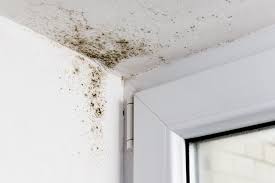Table of Contents
Ultimate Fall Home Inspection Checklist
When crisp air replaces summer’s heat, savvy homeowners know it’s time for a top-to-bottom check-in with their properties. Fall offers a perfect weather window—cool enough to work comfortably, but early enough to address problems before winter’s freeze or spring’s thaw magnifies them.
Use the checklist below to uncover hidden moisture pathways, stop small leaks cold, and outsmart the costly repairs that follow unchecked water and mold damage.

1. Roof & Gutters: Your First Line of Defense
✓ Scan shingles and flashing. From the ground with binoculars—or safely from a ladder—look for curled, missing, or cracked shingles and rusty or lifted flashing around vents and chimneys. Even one breach can funnel rain under the roof deck and into attic insulation.
✓ Clear and test gutters. Clogged gutters overflow, soaking fascia boards and siding. Scoop debris, then flush each downspout with a hose. Water should exit freely at least 1 meter away from the foundation; add extenders if necessary.
✓ Inspect soffits for stains. Dark streaks hint at ice-dam leaks or poor attic ventilation. Prompt patching and airflow tweaks now cost far less than a mid-winter ceiling collapse.
2. Attic & Insulation: Stop Condensation Before It Starts
✓ Feel for dampness in insulation. Mold loves damp cellulose and fiberglass. If insulation clumps or smells musty, trace the moisture source—often a minor roof leak or inadequate venting—and replace affected sections.
✓ Confirm ventilation pathways. Ridge and soffit vents should be unobstructed by insulation baffles. Adequate airflow whisks away humidity that can condense into rot when warm indoor air meets the cold roof deck.
✓ Check bathroom and dryer vent terminations. They should exit outdoors, not dump moist air into the attic
3. Exterior Walls, Windows & Doors: Seal the Envelope
✓ Look for peeling paint, warped siding, and gaps at penetrations. These flaws channel rain behind cladding, inviting hidden mold. Re-caulk and repaint exposed areas now; latex-acrylic formulas need temperatures above 50 °F/10 °C to cure properly.
✓ Examine window sills and door thresholds. Soft wood or bubbling paint signals chronic moisture. Replace failing weather-strip and tighten hardware so storms can’t force water inside.
✓ Test caulk around utility penetrations. Cable and HVAC lines often wiggle, cracking the seal. A $5 tube of exterior silicone beats a $500 drywall repair
4. Grading, Foundation & Drainage: Keep Water Moving Away
✓ Walk the perimeter after a rain. Pooled water beside the slab or basement wall means poor grading. Add soil or gravel to slope ground away at least 6 inches over the first 10 feet.
✓ Inspect foundation cracks. Hairline, stable cracks are common; widening or damp ones demand epoxy injection or professional assessment before freeze–thaw cycles enlarge them.
✓ Clean window wells and verify covers. Leaves trap moisture, stressing below-grade windows and encouraging mold behind drywall.
5. Plumbing Lines & Fixtures: Hunt for Hidden Drips
✓ Check supply lines under sinks and behind toilets. Run each fixture for two minutes and wipe a tissue along joints—if it wets, tighten or replace the fitting.
✓ Open rarely used taps. Basements, garages, and guest baths can harbor slow leaks unnoticed all summer.
✓ Drain exterior hose bibs. Shut interior valves (if present) and open spigots to prevent trapped water from bursting pipes in winter.
6. HVAC & Ventilation: Control Indoor Humidity
✓ Replace or clean filters. A clogged filter forces the system to run longer, creating more condensation in the air handler.
✓ Inspect condensate drain lines. Slide a cup beneath the end; water should flow freely when the furnace or heat pump cycles. Flush with a vinegar solution to thwart algae clogs.
✓ Clean kitchen and bath fans. Dusty blades reduce airflow, allowing steam to settle on walls—prime territory for mold spores.
7. Basement & Crawl Space: The Mold Hot Zone
✓ Use a flashlight and your nose. Musty odor often precedes visible mold.
✓ Check vapor barriers. A torn or missing sheet of polyethylene over soil lets ground moisture migrate upward. Repair seams with tape rated for crawl-space use.
✓ Inspect sump pump operation. Lift the float; the pump should activate and discharge outside well away from the foundation. Add a battery backup if outages are common in your area.
8. Interior Surfaces & Safety Devices: Finish Strong
✓ Spot-test ceilings and corners. Yellow rings or peeling tape suggest roof or plumbing leaks above. Address cause, then prime with stain-blocking sealer.
✓ Examine tile grout and caulk. Cracked joints in showers let water seep behind walls. Regrout or recaulk with mildew-resistant products.
✓ Press GFCI and test smoke/CO alarms. Water damage often starts electrical fires when hidden leaks reach wiring. Fresh batteries cost pennies compared to structural repairs.

Completing this fall checklist takes a weekend, basic tools, and a keen eye, yet it can save thousands by catching moisture issues before they blossom into black mold, swollen subfloors, or burst pipes. Document what you find, prioritize fixes by severity, and—where tasks exceed your comfort zone—call qualified pros before winter strikes. With the envelope tight, drainage flowing, and systems humming, you’ll head into the cold months confident that leaks, mold, and surprise repair bills are locked out in the cold.
In conclusion, following a thorough inspection checklist each fall is one of the smartest investments you can make as a homeowner. This inspection checklist serves as a proactive tool to identify and resolve minor issues before they become expensive repairs.
From your roof to your basement, each section of the inspection checklist ensures you’re not missing critical areas vulnerable to moisture, mold, and leaks. A detailed inspection checklist also helps you plan maintenance tasks efficiently and avoid last-minute emergencies when winter hits. Don’t underestimate the power of a seasonal inspection checklist—it’s your first line of defense against costly surprises.
Keep your inspection checklist updated annually, and review your findings each year for trends or recurring problems. Ultimately, your fall inspection checklist is more than a chore; it’s your home’s insurance policy for long-term health and comfort.




 PuroClean of Layton
PuroClean of Layton